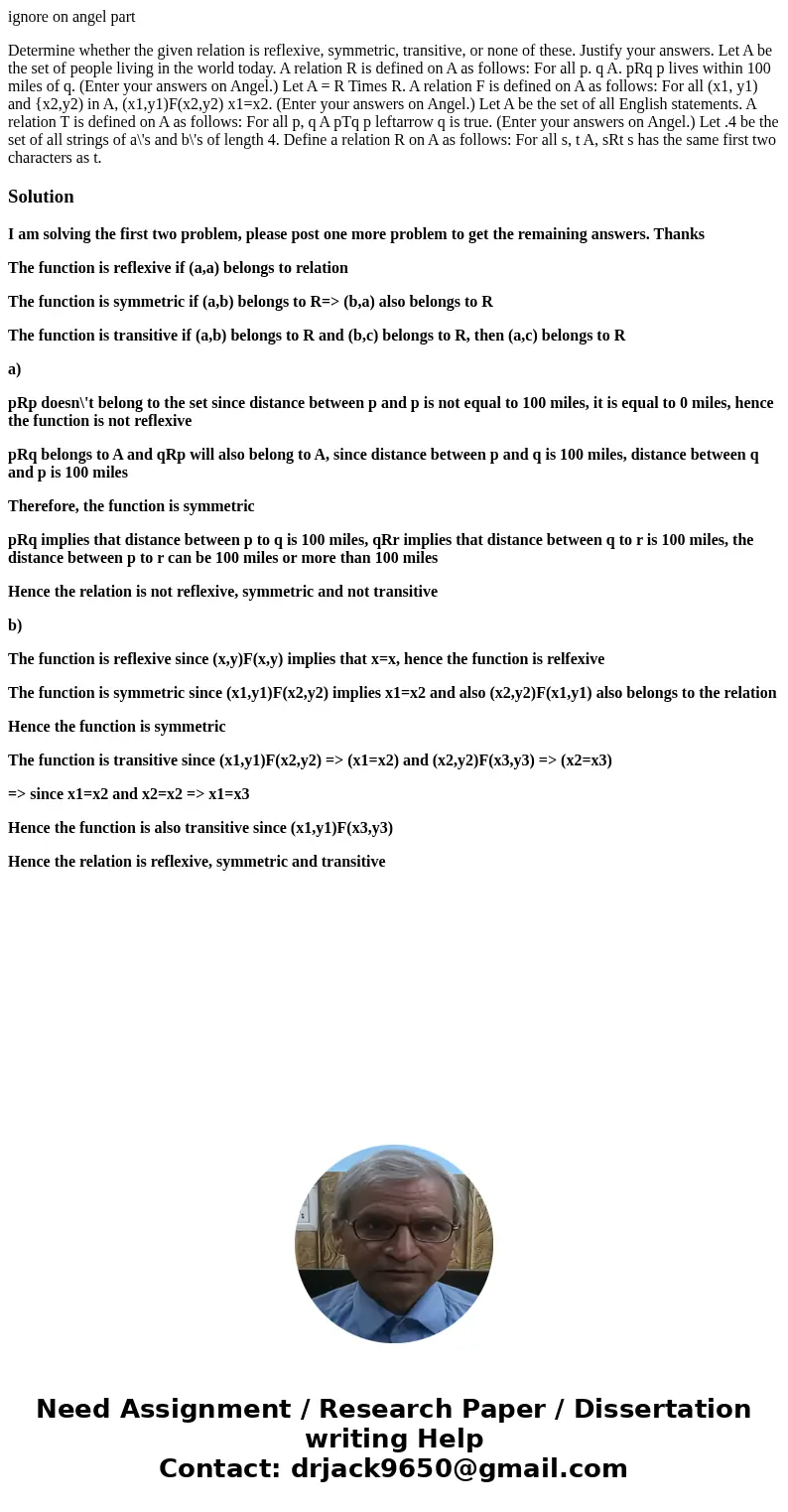ignore on angel part Determine whether the given relation is
ignore on angel part
Determine whether the given relation is reflexive, symmetric, transitive, or none of these. Justify your answers. Let A be the set of people living in the world today. A relation R is defined on A as follows: For all p. q A. pRq p lives within 100 miles of q. (Enter your answers on Angel.) Let A = R Times R. A relation F is defined on A as follows: For all (x1, y1) and {x2,y2) in A, (x1,y1)F(x2,y2) x1=x2. (Enter your answers on Angel.) Let A be the set of all English statements. A relation T is defined on A as follows: For all p, q A pTq p leftarrow q is true. (Enter your answers on Angel.) Let .4 be the set of all strings of a\'s and b\'s of length 4. Define a relation R on A as follows: For all s, t A, sRt s has the same first two characters as t.Solution
I am solving the first two problem, please post one more problem to get the remaining answers. Thanks
The function is reflexive if (a,a) belongs to relation
The function is symmetric if (a,b) belongs to R=> (b,a) also belongs to R
The function is transitive if (a,b) belongs to R and (b,c) belongs to R, then (a,c) belongs to R
a)
pRp doesn\'t belong to the set since distance between p and p is not equal to 100 miles, it is equal to 0 miles, hence the function is not reflexive
pRq belongs to A and qRp will also belong to A, since distance between p and q is 100 miles, distance between q and p is 100 miles
Therefore, the function is symmetric
pRq implies that distance between p to q is 100 miles, qRr implies that distance between q to r is 100 miles, the distance between p to r can be 100 miles or more than 100 miles
Hence the relation is not reflexive, symmetric and not transitive
b)
The function is reflexive since (x,y)F(x,y) implies that x=x, hence the function is relfexive
The function is symmetric since (x1,y1)F(x2,y2) implies x1=x2 and also (x2,y2)F(x1,y1) also belongs to the relation
Hence the function is symmetric
The function is transitive since (x1,y1)F(x2,y2) => (x1=x2) and (x2,y2)F(x3,y3) => (x2=x3)
=> since x1=x2 and x2=x2 => x1=x3
Hence the function is also transitive since (x1,y1)F(x3,y3)
Hence the relation is reflexive, symmetric and transitive

 Homework Sourse
Homework Sourse